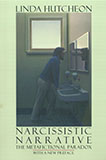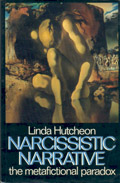

Narcisisstic Narrative: the Metafictional ParadoxWell before postmodernism became the buzz-word of academic discourse, novels betrayed symptoms of its infiltration: from Tristram Shandy through to The French Lieutenant's Woman , the novel has been a narcissistic genre, examining within itself its own nature as narrative and as language. Having placed this self-reflexive phenomenon in its historical context, this study then looks to the reader—and theories of reading—to explore the paradox created by metafiction: the reader is at one and the same time a co-creator of the self-reflexive text and yet distanced from it because of its very self-reflexivity. Using the works of a variety of European and North American literary cultures (including works by John Fowles, John Barth, Italo Calvino, Vladimir Nabokov, Paolo Volponi, Jorge Luis Borges, Alejo Carpentier, Leonard Cohen, and Hubert Aquin), Narcissistic Narrative explores--through the teachings of self-conscious fictions themselves--the implications of self-reflexivity for the theory of the novel itself. Table of ContentsIntroduction Chapter One: |